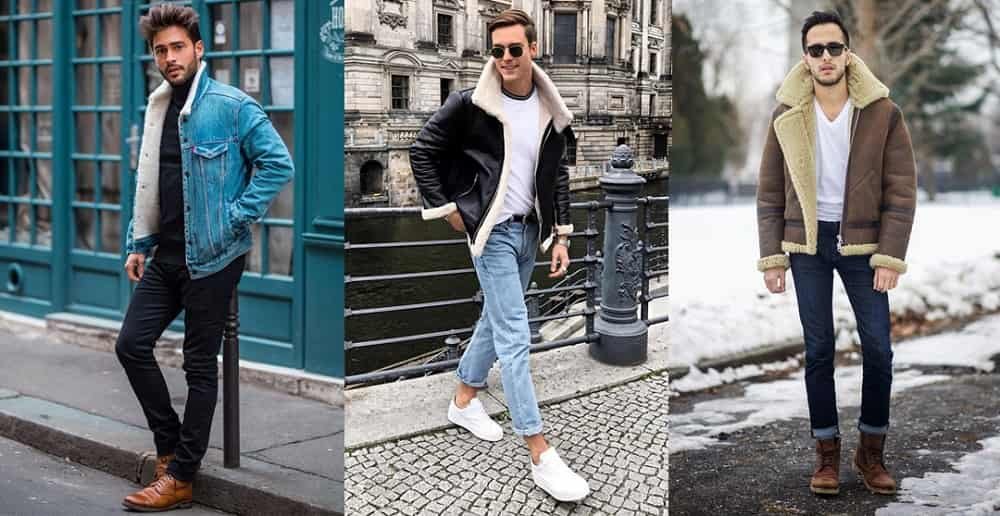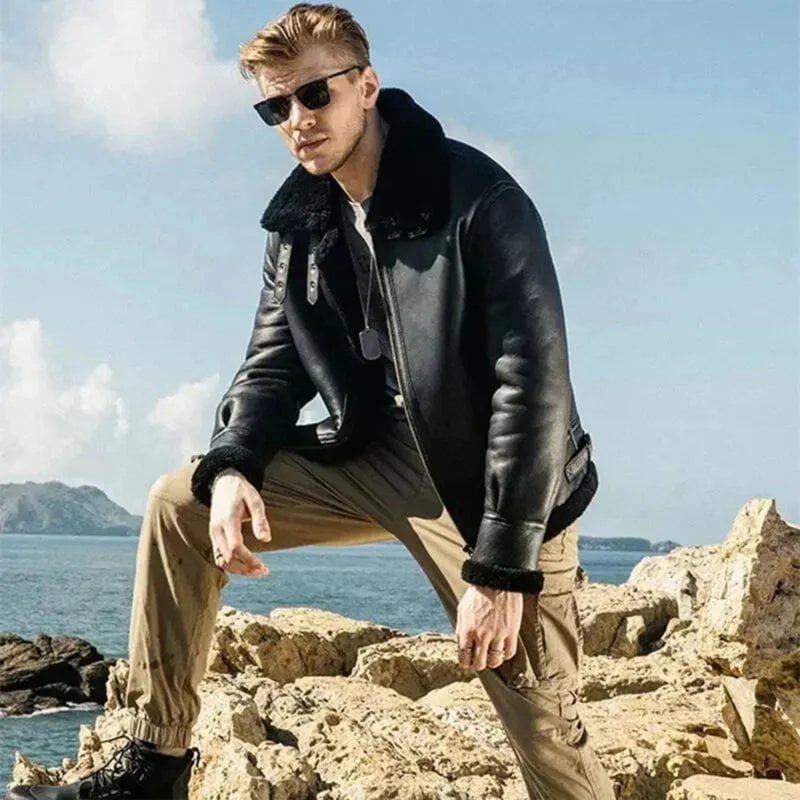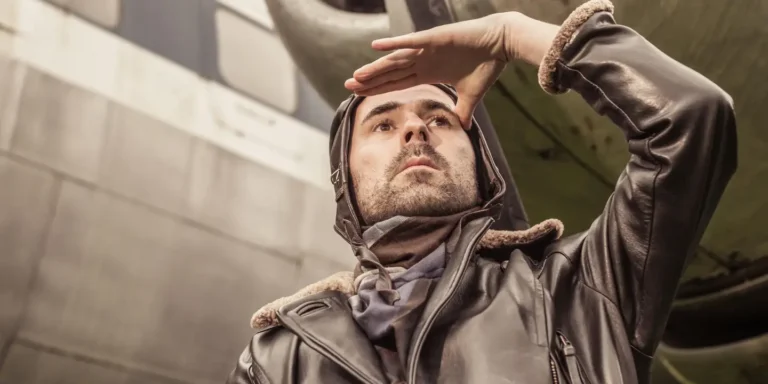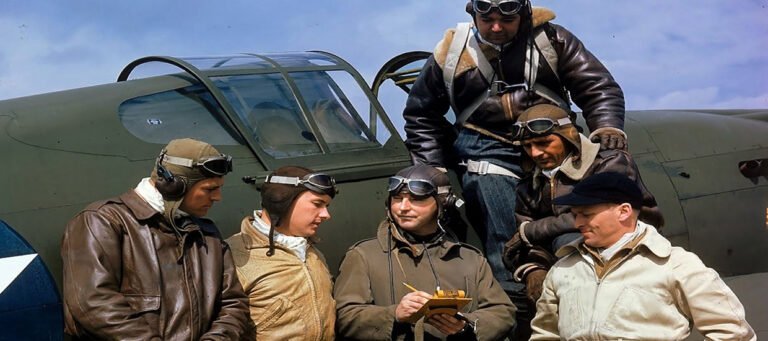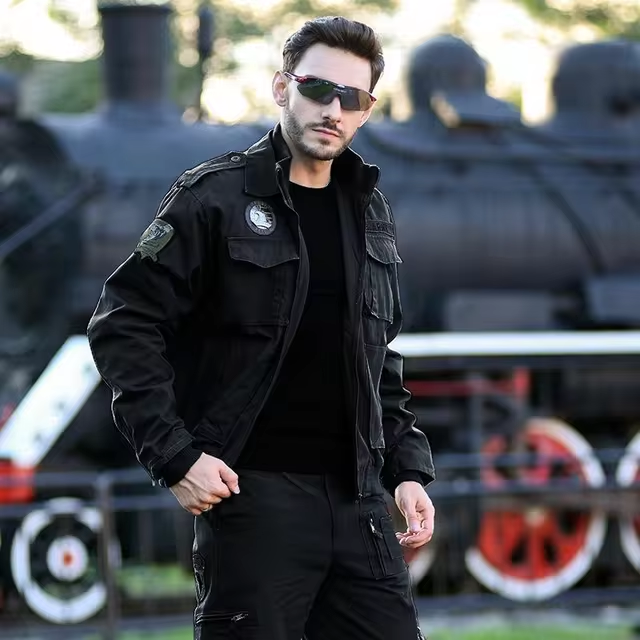What is the Difference Between B3 and B6 Jacket?
Introduction to B3 and B6 Jackets
The B3 jacket and B6 jackets hold prominent places in both military history and fashion. Originating from the early 20th century, these iconic pieces were initially designed for military aviators who needed durable, insulating garments to withstand the harsh conditions at high altitudes. The B3 jacket, introduced in 1934, and the B6 jacket, which came into use in 1938, both feature a robust construction and were crafted to offer optimal warmth and protection.
Historical utilization of these jackets underscores their significance. During World War II, bomber crews favored the B3 jacket for its sheepskin material that provided unparalleled warmth. Similarly, the B6 jacket, being lighter and slightly less bulky, was preferred by fighter pilots who required more agility without compromising on insulation. Both jackets played crucial roles on the battlefield, contributing to the success of numerous missions.
As these jackets transitioned from military use to civilian fashion, their unparalleled quality and timeless design ensured their enduring popularity. Made from high-quality materials, such as genuine sheepskin and leather, they offer not only durability but also sophisticated style. Their ability to provide excellent protection against extreme weather conditions made them a staple in both functional and fashion-forward wardrobes.
While the B3 and B6 jackets share several similarities, distinct differences set them apart. These differences not only define their individual characteristics and appropriate usage scenarios but also cater to varying preferences within the realms of style and functionality. Understanding these nuances is essential in appreciating the unique heritage each jacket brings to contemporary fashion while also acknowledging their historical significance.
Design and Material Differences
B3 and B6 jackets, while both rooted in the heritage of aviator style, exhibit distinct differences in design and materials that contribute to their unique attributes. The B3 jacket, introduced during World War II, is traditionally crafted from heavy-duty sheepskin. This sheepskin typically features a leather exterior with a thick, plush shearling wool interior, providing substantial warmth in harsh climates. The outer leather is vegetable-tanned for durability, which enhances its resilience against wear and tear.
In terms of design, the B3 jacket is known for its bomber-style cut, characterized by a short length and a somewhat bulky silhouette. It usually includes a broad shearling collar that can be fastened for additional neck protection, dual front pockets for practicality, and robust buckles or zip closures. The presence of reinforced seams and heavy-duty stitching adds to its rugged appeal.
In contrast, the B6 jacket, which emerged later, offers a slimmer, more streamlined profile while still maintaining the essential elements of an aviator jacket. It is typically constructed from lighter sheepskin than its B3 counterpart, with a slightly thinner shearling lining, making it more suitable for milder weather conditions. The leather used in B6 jackets is often softer and more flexible, enhancing comfort without compromising on durability.
Design-wise, the B6 jacket features a simpler, less bulky appearance with a tighter fit around the body. The collar usually has a less pronounced shearling detail, and the jacket might incorporate fewer exterior pockets, emphasizing a cleaner look. Closures on the B6 are often zippered, with less reliance on additional buckles or straps.
Manufacturing techniques also differ slightly, with some brands opting for hand-crafted processes to preserve authenticity. Notable brands that have popularized these jackets include Bravohide, renowned for their high-quality craftsmanship.
Overall, the choice between a B3 and a B6 jacket can significantly influence not only the aesthetics but also the functional aspects, particularly concerning warmth and mobility. Understanding these differences helps in selecting the appropriate jacket for one’s needs and preferences.
Functional and Practical Use
The B3 and B6 jackets stem from a rich history of military use, designed specifically for aviators during World War II. Each variant served crucial roles, tailored to meet distinct functional needs. The B3 jacket, renowned for its superior insulation, was crafted to keep pilots warm in freezing conditions at high altitudes. Its sheepskin lining and robust leather exterior provided unmatched warmth, essential for cockpit environments where temperatures frequently dropped below freezing. Pilots often praised the B3 for its heat retention, which significantly boosted their comfort and operational efficiency.
Conversely, the B6 jacket emerged as a lighter and more versatile alternative. Designed for conditions where extreme cold was less a priority, the B6 offers a balance between warmth and maneuverability. Its streamlined design features lighter layers, making it less bulky and easier to wear both inside and outside the cockpit. This functional distinction allowed pilots to maintain flexibility without sacrificing essential warmth, particularly during missions that demanded agility and quick movements.
The practical differences between the B3 and B6 jackets extend beyond their intended military use to modern-day applications. The B3, with its heavy insulation, is favored for exceptionally cold climates. Its weight and warmth make it an ideal choice for activities such as winter sports, outdoor excursions, and even leisurely winter wear where maximum insulation is paramount. On the other hand, the B6 jacket’s lighter construction offers a versatile option for varied conditions. It is better suited for mild to moderate winter climates, where warmth is needed without the burden of excessive bulk.
Historical accounts of WW II aviators reveal the profound impact these jackets had on mission success. For instance, the durability and insulation of the B3 ensured pilots could withstand the rigors of long flights in subzero temperatures, contributing to their overall endurance and effectiveness. These historical anecdotes underscore the jackets’ practical design, which translates to modern-day utility and underscores their enduring popularity.
Fashion and Cultural Impact
The transformation of the B3 and B6 jackets from functional military wear to iconic fashion staples is a testament to their enduring appeal. Initially designed for World War II aviators, these jackets have transcended their utilitarian origins to become symbols of rugged style and sophistication. The B3, with its shearling lining and bulky profile, was created to protect pilots from freezing temperatures at high altitudes. Similarly, the B6 was tailored for a sleeker fit while still offering substantial warmth, making it practical yet fashionable.
Both the B3 and B6 jackets have undergone significant shifts in perception over the years. Post-war, these aviator jackets became emblems of resilience and adventure, capturing the imagination of the public. They found their place in Hollywood films, television, and music videos, cementing their status in popular culture. The likes of Steve McQueen and Harrison Ford have famously donned these jackets, propelling their allure and inspiring countless fashion enthusiasts.
Designers and stylists have continually reinterpreted the B3 and B6 jackets, incorporating them into modern wardrobes. High-fashion houses and streetwear brands alike have integrated these classic pieces into their collections, blending historical elements with contemporary trends. The versatile nature of these jackets allows for a multitude of styling options, from casual ensembles to more polished looks. This adaptability ensures that the B3 and B6 maintain relevance, appealing to a wide range of audiences.
The cultural impact of the B3 and B6 jackets is undeniable. They have become more than just outerwear; they are fashion statements that communicate a sense of strength, history, and individuality. Their legacy is evident in the way designers continue to draw inspiration from their timeless designs, reimagining them for new generations. Currently, these jackets enjoy a resurgence in popularity, often seen in fashion week runways and street style photography.
In conclusion, the B3 and B6 jackets have etched their names into the annals of fashion history, evolving from military necessity to everlasting icons of style. Their journey from the skies to the streets exemplifies their unique appeal and the ongoing fascination they command in the world of fashion.

